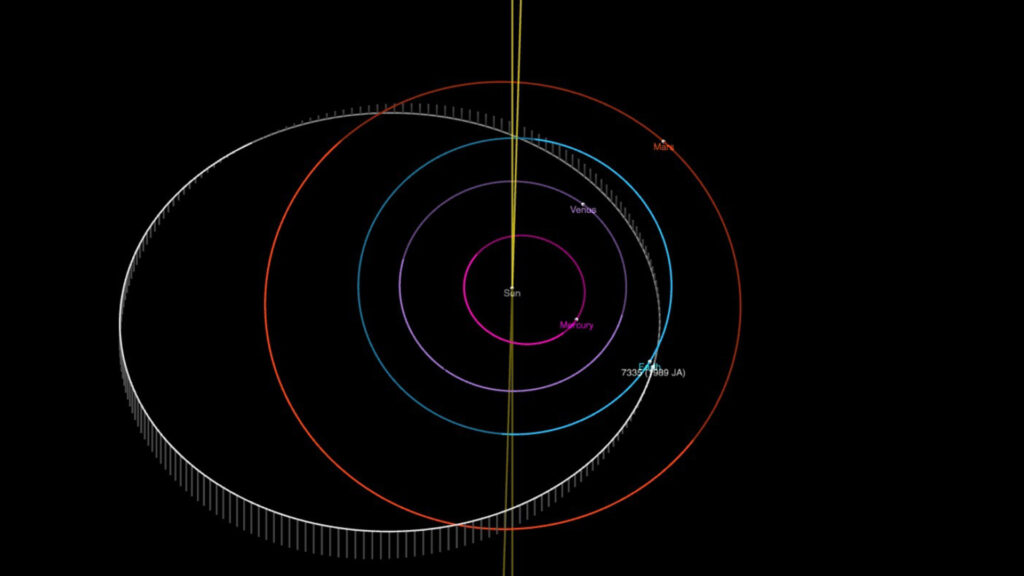Throughout the year, several asteroids pass relatively “close” to our planet, without risk to us. A specimen measuring 4 times the size of the Empire State Building will also make a passage on May 27, 2022, without any danger.
It would be ” four times larger than the Empire State Building “, according to some American media. A fairly large asteroid, measuring 1.8 kilometers in diameter, is expected to pass close to Earth on May 27, 2022, according to information relayed by ScienceAlert on May 23. There is in fact no risk that the object “grazes” us.
Apotentially dangerous asteroid?
Don’t worry: the asteroid named 7335 (1989 JA) will pass 4 million km from Earth, or about 10 times the average distance between the Earth and the Moon. However, NASA classifies this as ” potentially dangerous ”, given the imposing size of the space rock (1.8 km in diameter) and its presence relatively close to the Earth.
What does it mean, an asteroid” potentially dangerous »? CNEOS director Paul Chodas told Newsweek that ” over the next few centuries and millennia, the asteroid’s orbit may evolve into an orbit that has a chance of impacting Earth. We evaluate these possibilities of impact over the long term, i.e. several centuries. To be considered dangerous, an asteroid must be at least 140 meters wide and within 4.6 million kilometers of Earth’s orbit around the Sun.
The approach of 7335 (1989 JA), which is expected to occur on May 27, 2022, will be a good opportunity for scientists to better observe the asteroid, as well as a chance for amateur astronomers to spot it in the southern sky near of the constellation Hydra. Astronomers hoping to catch a glimpse of the asteroid will need a telescope to view the massive rock (it won’t be bright enough to see with the naked eye).
What would happen if there was an asteroid threat?
Asteroid impacts would possibly be dangerous for our planet, because of their destructive potential. But fear not, that’s not the case with this one (or any other, for that matter).

NASA closely monitors theasteroids with its DART mission, just like the CNSA. The Chinese space agency recently expressed its intention to launch a mission with the aim of observing a possible deviation from the trajectory of potentially dangerous asteroids and a possible collision with the Earth. Worthy of a Hollywood movie, isn’t it?
